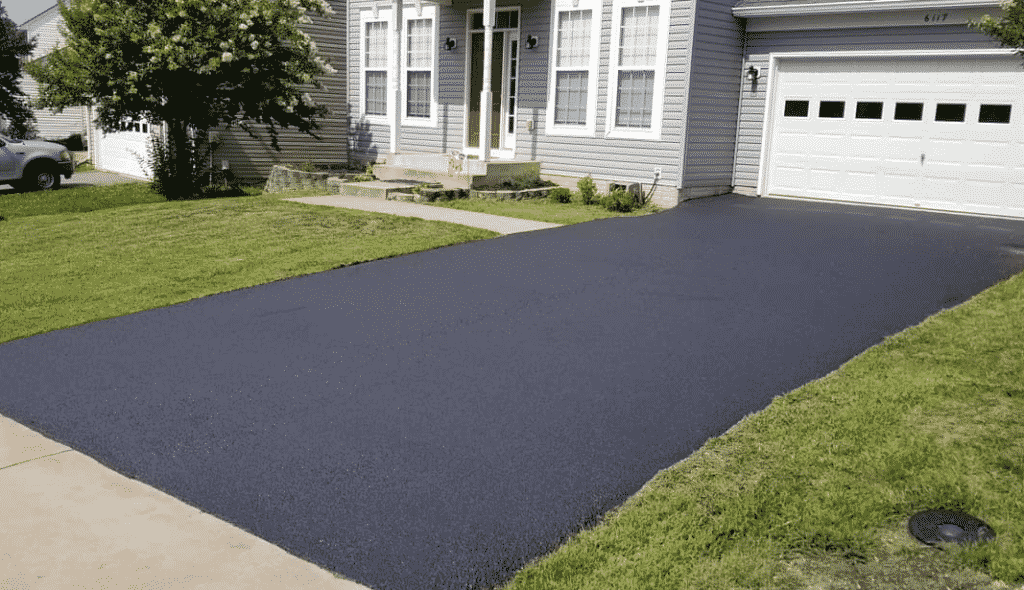Take Full Advantage Of Safety with Angle Parking Lot: Superior Asphalt Sealing
Take Full Advantage Of Safety with Angle Parking Lot: Superior Asphalt Sealing
Blog Article
Cold Mix Asphalt Vs. Hot Mix Asphalt: Which Is Right for You?

Make-up Distinctions
Cold mix and hot mix asphalts differ substantially in their structure, with distinctive characteristics that affect their performance and applications. Cold mix asphalt is generated by emulsifying the asphalt binder with water and an emulsifying representative before mixing it with accumulation. This technique enables the asphalt to be workable at lower temperatures, making it optimal for short-term repair services and for use in colder climate conditions. Hot mix asphalt, on the other hand, is made at heats, normally in between 300-350 ° F, which aids to achieve better compaction and a more sturdy end product. The hot mix asphalt manufacturing procedure involves heating up the aggregate and asphalt binder individually before incorporating them at the asphalt plant.
In addition, cool mix asphalt tends to be much less dense and much more versatile than warm mix asphalt. This adaptability makes it better suited for areas with greater levels of activity, such as driveways or roadways with heavy website traffic. On the other hand, warm mix asphalt is understood for its high durability and resistance to rutting and breaking, making it a preferred selection for highways and high-traffic roadways where long life is crucial.
Installation Process Variances
The procedure of setting up cold mix and warm mix asphalt exhibits notable variances in their demands and treatments. Cold mix asphalt, being a much more versatile material, can be used directly from the bag or container onto the fracture or damaged location. It needs minimal preparation work, such as cleansing the location and compacting the cold combine with hand tools. This makes it a practical choice for quick and temporary solutions. In contrast, warm mix asphalt requires a more intricate installation process. It involves heating up the blend to high temperatures prior to laying it down on an appropriately ready base. The prep work includes compacting the base, applying a tack layer, and utilizing heavy machinery like pavers and compactors for a smooth and sturdy surface. As a result of the heating requirements, warm mix asphalt setups are commonly accomplished by professionals with specific tools, making sure a more structurally audio and irreversible outcome.
Sturdiness and Durability Factors
When thinking about asphalt alternatives, durability and longevity are critical elements to review for lasting pavement performance. Hot mix asphalt (HMA) is recognized for its extraordinary durability and durability.
In Going Here regards to long life, HMA normally exceeds CMA as a result of its superior strength and resistance buildings. HMA pavements have a longer life span, requiring less constant repair work and maintenance, which can convert to cost savings over time. In addition, HMA sidewalks are much more quickly personalized to satisfy particular project demands, even more enhancing their resilience.
Expense Considerations
Thinking about the economic ramifications is a vital aspect when assessing the choice in between warm mix asphalt (HMA) and chilly mix asphalt (CMA) for pavement jobs. While the first price of warm mix asphalt is commonly higher than that of cold mix asphalt, HMA often gives an extra economical remedy in the lengthy run due to its premium sturdiness and durability.
In addition to material prices, it's important to take into consideration the costs connected with installation and upkeep when comparing HMA and CMA. Ultimately, the choice in between HMA and CMA must take into account not simply the preliminary price yet likewise the lasting economic implications to figure out the most cost-effective option for the particular pavement job.
Environmental Effect Contrast
Contrast of the ecological influences in between warm mix asphalt (HMA) and look at this website cold mix asphalt (CMA) reveals distinct differences in sustainability techniques. HMA production needs high temperatures, causing enhanced power intake and greenhouse gas discharges. The process likewise releases volatile organic substances (VOCs) and dangerous air toxins (HAPs) right into the environment. On the other hand, CMA is generated and used at reduced temperature levels, minimizing energy usage and discharges dramatically. The lower manufacturing temperatures of CMA cause lowered gas intake and lower degrees of CO2 emissions, making it an extra ecologically pleasant option.
Furthermore, the usage of CMA commonly includes recycling existing asphalt pavement, advertising resource conservation and minimizing the amount of waste sent to landfills. By deciding for CMA over HMA, road construction jobs can add favorably to ecological conservation efforts.
Conclusion
In final thought, the selection between chilly mix asphalt (CMA) and hot mix asphalt (HMA) depends upon different factors such as composition, setup procedure, toughness, long life, expense, and ecological effect. angle parking. While CMA offers a fast and affordable service for small repair best site work, HMA makes sure premium sturdiness and longevity for rush hour areas. Think about these aspects carefully to establish which kind of asphalt is the best option for your paving requires

Taking into consideration the financial ramifications is an essential aspect when assessing the choice between warm mix asphalt (HMA) and chilly mix asphalt (CMA) for pavement tasks. While the initial expense of warm mix asphalt is commonly higher than that of cool mix asphalt, HMA typically gives an extra affordable option in the long run due to its premium longevity and longevity. cold mix asphalt.Comparison of the ecological impacts in between hot mix asphalt (HMA) and chilly mix asphalt (CMA) discloses distinct distinctions in sustainability practices.In final thought, the choice in between chilly mix asphalt (CMA) and warm mix asphalt (HMA) depends on different aspects such as make-up, installation procedure, resilience, durability, price, and environmental influence
Report this page